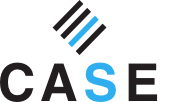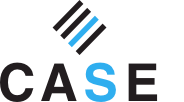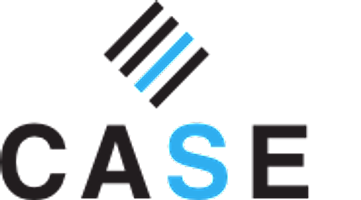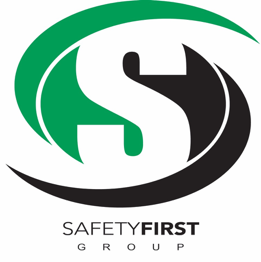Title Page
-
Conducted on
-
Prepared by
-
Location
Size & Context of the Organisation
-
Provide a summary describing the activities that are undertaken by the PCBU.
-
Select the Critical Risk Hazard that the PCBU workers are exposed to:
- Working at Heights
- Live Services
- Powertools
-
How many employees work for the PCBU?
-
01-Leadership & Commitment
-
Does the PCBU maintain a suite of Policy Statements?
-
Does the PCBU have a Health & Safety
02-Legal Compliance & Document Control
03-Planning & Objectives
04-Hazard ID & Risk Management
05-Training, Competency & Behaviours
06-Health & Hygiene
07-Communications, Engagement & Participation
08-Community, Sustainability & Environment
09-Project Planning & Construction
10-Contractors, Suppliers & Business Partners
11-Assets, Plant & Equipment
12-Event Reporting & Investigation
13-Emergency Management
14-Assurance
Standard 1 – Leadership & Commitment
-
1. An H&S Policy Statement is in place and is up to date.
-
2. The Policy Statement aligns with the size and scope of the Organisation.
-
3. The Policy Statement is approved by a Senior Leader (Owner/Director/CEO).
-
4. The Policy Statement assigns responsibility for Health & Safety performance to Management.
-
5. The Policy Statement outlines the responsibility’s of workers for health & Safety.
Standard 2 – Legal Compliance and Document Control
-
1. The Organisation has a process in place to identify applicable H&S related laws and regulations.
-
2. The Organisation demonstrates compliance with legal requirements through the implementation of procedures.
-
3. The Organisation ensures minimum legal standards are maintained at all times, despite variation in client requirements.
-
4. The Organisation has a process to ensure documented information is controlled so that it remains effective.
-
5. The Organisation has a system to manage documented information
-
6. The Organisation has a process in place to manage documented information reviews and disposals
-
7.The Organisation identifies and records how documented information can be simply accessed and used
Standard 3 – Planning and Objectives
-
1. The Organisation demonstrates processes showing that H&S is an integral part of the business strategy
-
2. The Organisation demonstrates continuous improvement in H&S
-
3. The Organisation sets Annual objectives, goals, targets etc. that are consistent with the Policy Document
-
4. The Organisation monitors and reports on performance against those targets.
-
5. Action plans to achieve targets are formulated with assigned responsibilities to individuals.
-
6. Action Plans are monitored, reported on and follow up taken to ensure achievement.
-
7. Performance evaluation information is used to refine and adjust targets and plans.
Standard 4 - Hazard ID and Risk Management
-
1. The Organisation has a combination of different processes in place to identify hazards and associated risks
-
2. The Organisation has processes in place to report Hazards and Risks.
-
3. The organisation has a process in place to record and maintain Hazards and Risks (eg Register)
-
4. The Organisation ensure the register is maintained to ensure it is up to date.
-
5. The Organisation has processes in place to review the register
-
6. Once identified, reported and recorded the Organisation has a process in place to determine and assess risks
-
7. The Organisation involves people(Management and Workers) from the business with the appropriate knowledge of the risk, in the risk assessment process.
-
8. The Organisation clearly identifies Hazards and Risks that are assessed as ‘High’ or Critical.
-
9. Management ensures resources for control measures are provided, with a focus on Critical Risks
-
10. The Hierarchy of Controls is used.
-
11. ALARP is achieved and Management is involved in decision making where residual risk level remain higher than expected, accepted or tolerated.
-
12. An appropriately skilled and experience H&S professional facilitates the risk assessment process
-
13. The Organisation has processes in place to manage change and ensure ALARP.
Standard 5 – Training, Competence and Behaviour
-
1. Inductions are provided to new workers, contractors or visitors to an appropriate level. Records are maintained.
-
2. The Organisation identifies the competencies required for its workers to perform their roles within the scope of the organisation's work.
-
3. Training records including such processes as needs analysis, matrix and registers are developed and maintained.
-
4. The organization has a process in place to observe their workers on the job behaviors match expectations
-
5. Behavioural observation information is reviewed and used to create and assign action plans for improvement.
Standard 6 – Health and Hygiene
-
1. Health risks are identified as part of Standard 4
-
2. Health Monitoring and assessment processes are in place relevant to the risk assessment.
-
3. Health Monitoring and assessment programs are performed by appropriately skilled and experienced health professionals
-
4. Health risks are managed in accordance with the hierarchy of controls
-
5. Specific health-related risks that require specific procedures are identified in the risk assessment, such as Drugs and Alcohol, Manual Handling etc.
-
6. The Organisation has processes in place to manage work-related injuries and illnesses, including immediate response through to return to work.
Standard 7 – Communication, Engagement and Participation
-
1. The Organisation has processes in place to communicate H&S related information within their own organisation and to other organisations
-
2. Information and communications are designed to meet the needs of the audience.
-
3. Communications are aligned to legal requirements, policy statements and other procedures.
-
4. Processes are in place that allows for worker participation systems, without barriers.
-
5. Workers contribute to the development and improvement of H&S performance.
-
6. Workers are consulted on H&S policy and other managerial processes.
-
7. The Organisation communicates with external stakeholders, such as councils, where necessary.
-
8. The Organisation communicates learnings from events and topical information to its workers.
Standard 8 – Community, Sustainability and Environment
Standard 9 – Operations, Project Planning and Construction
-
1. The Organisation has processes in place to manage operational and maintenance services to ALARP.
-
2. Specific Operational Plans are maintained, kept up to date and remain relevant throughout the operational lifecycle.
-
3. Multiple PCBU situations are managed through coordination, consultation, and cooperation.









